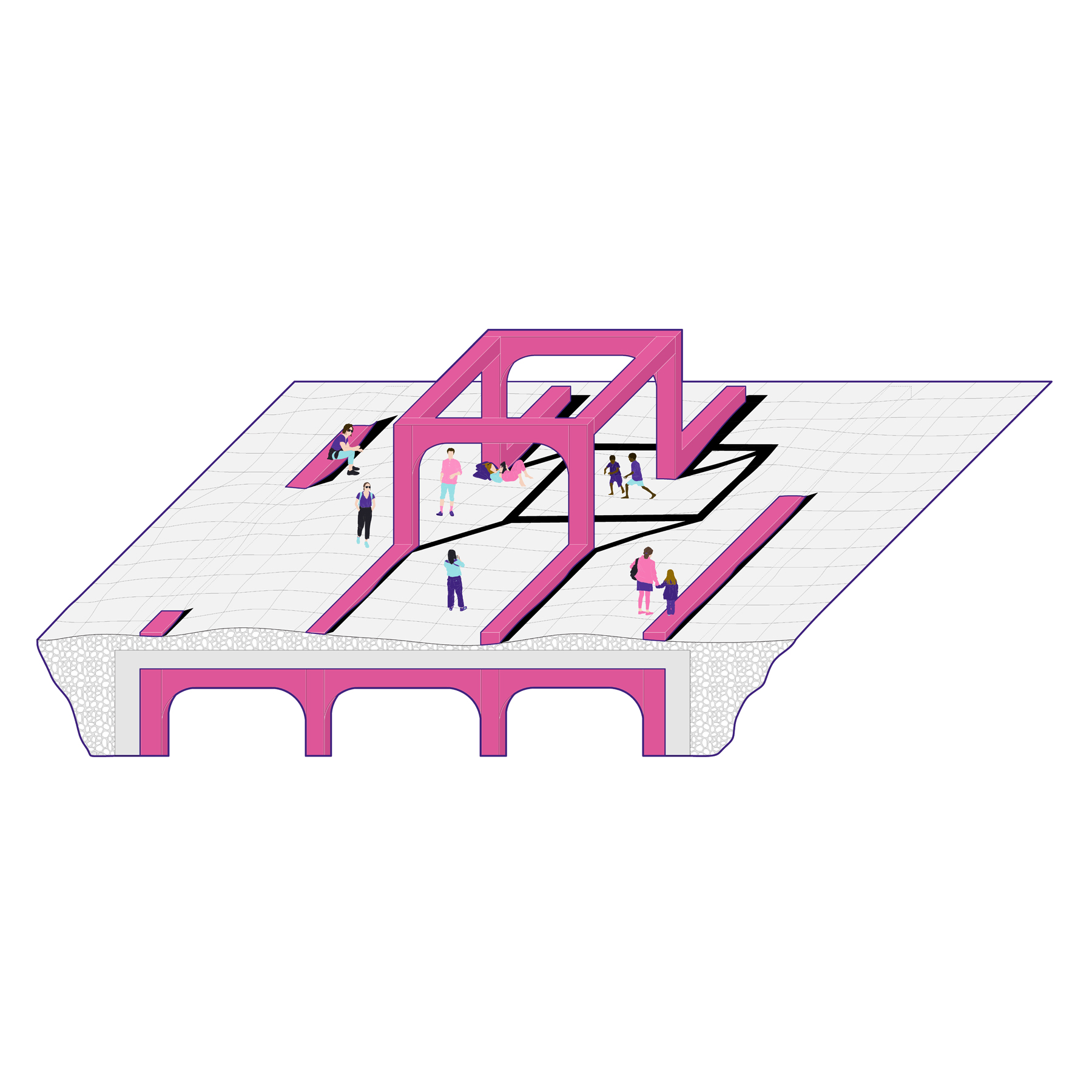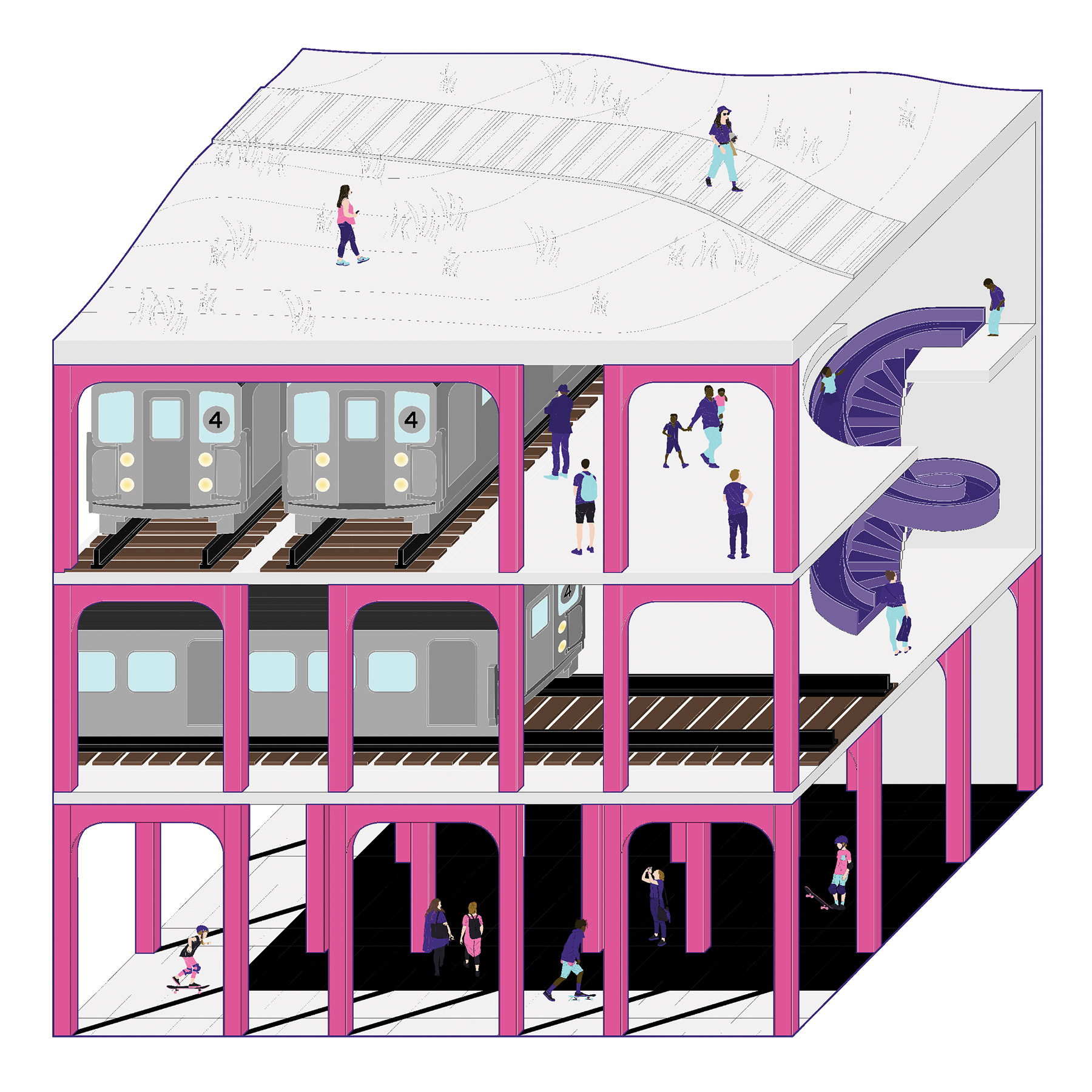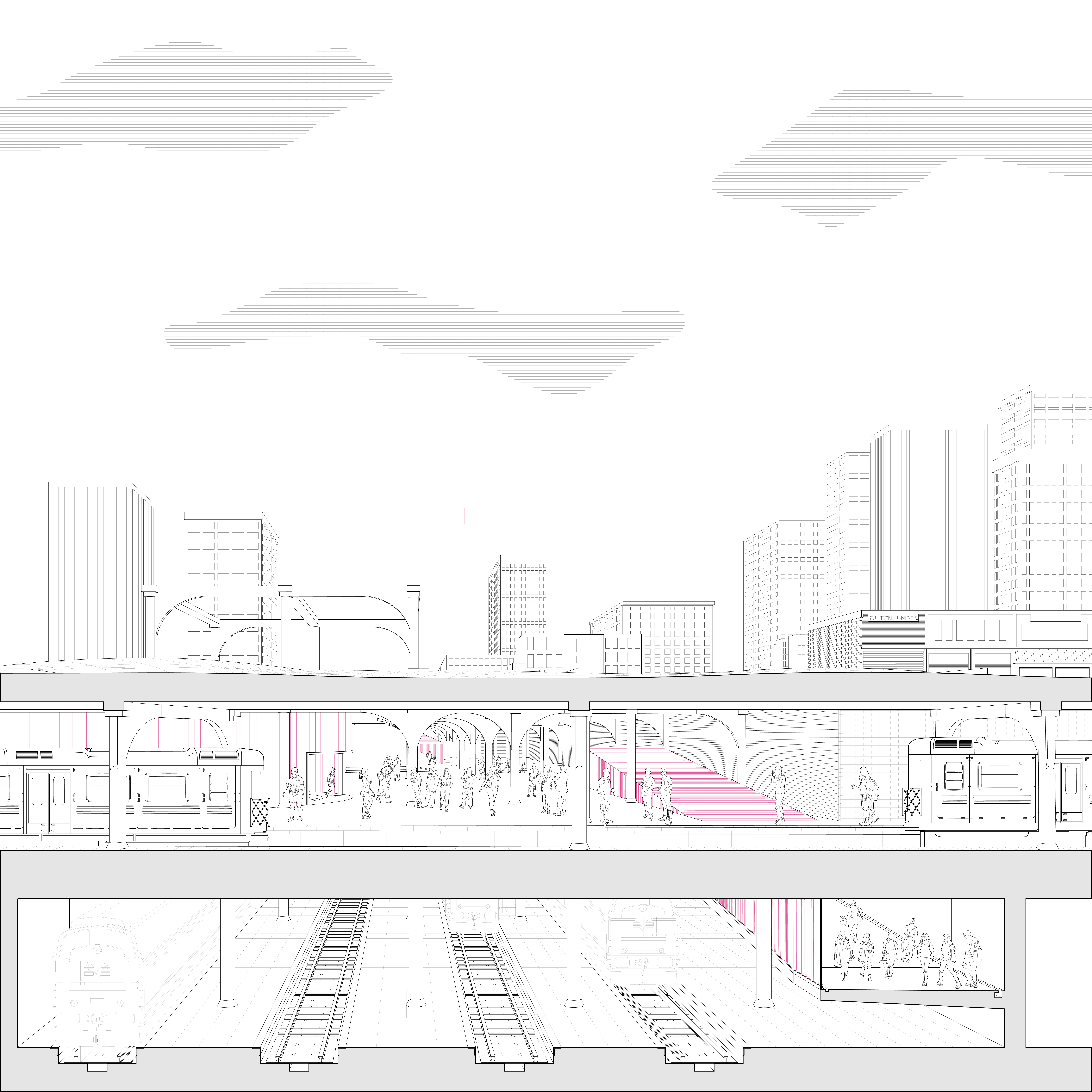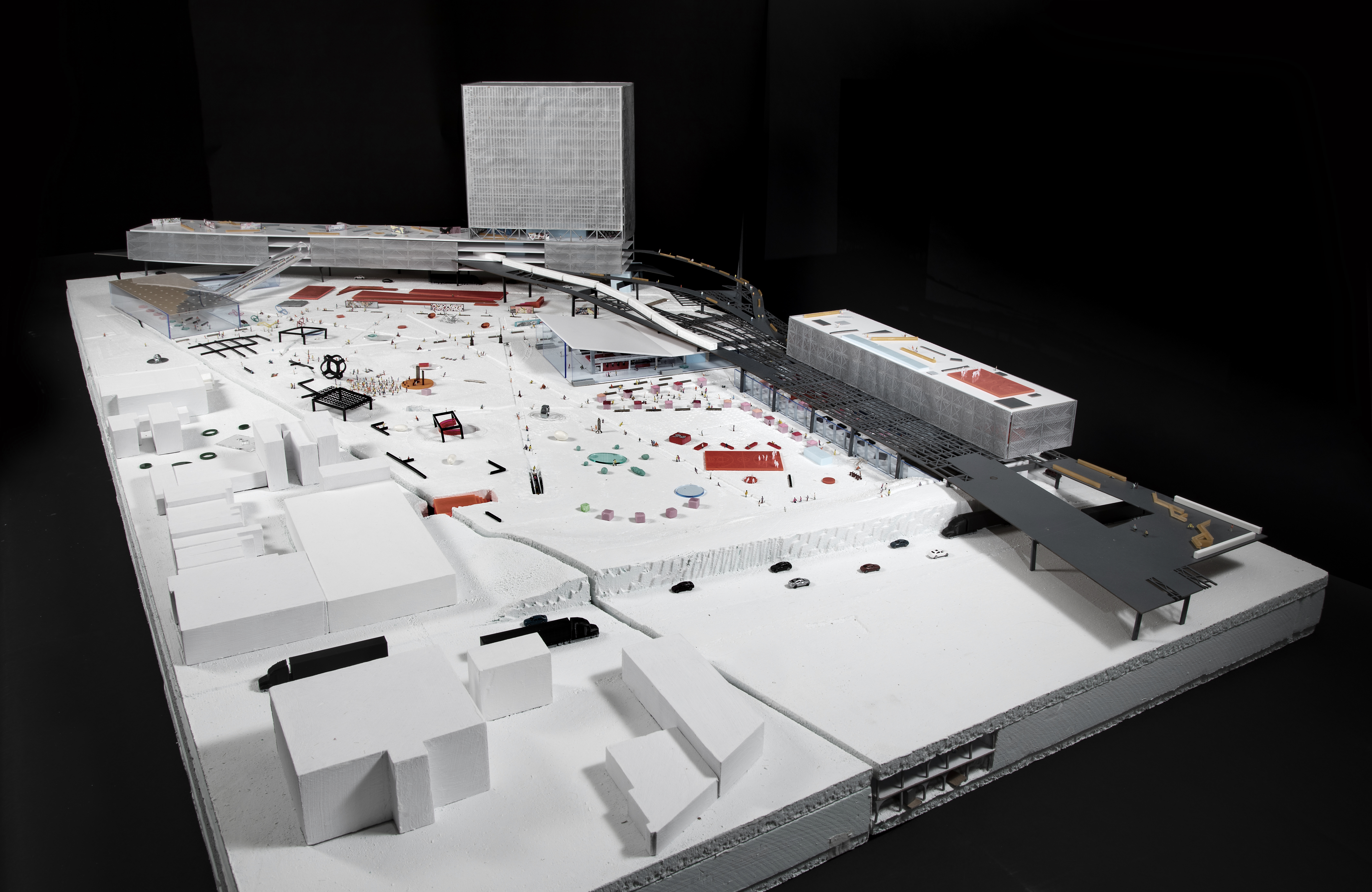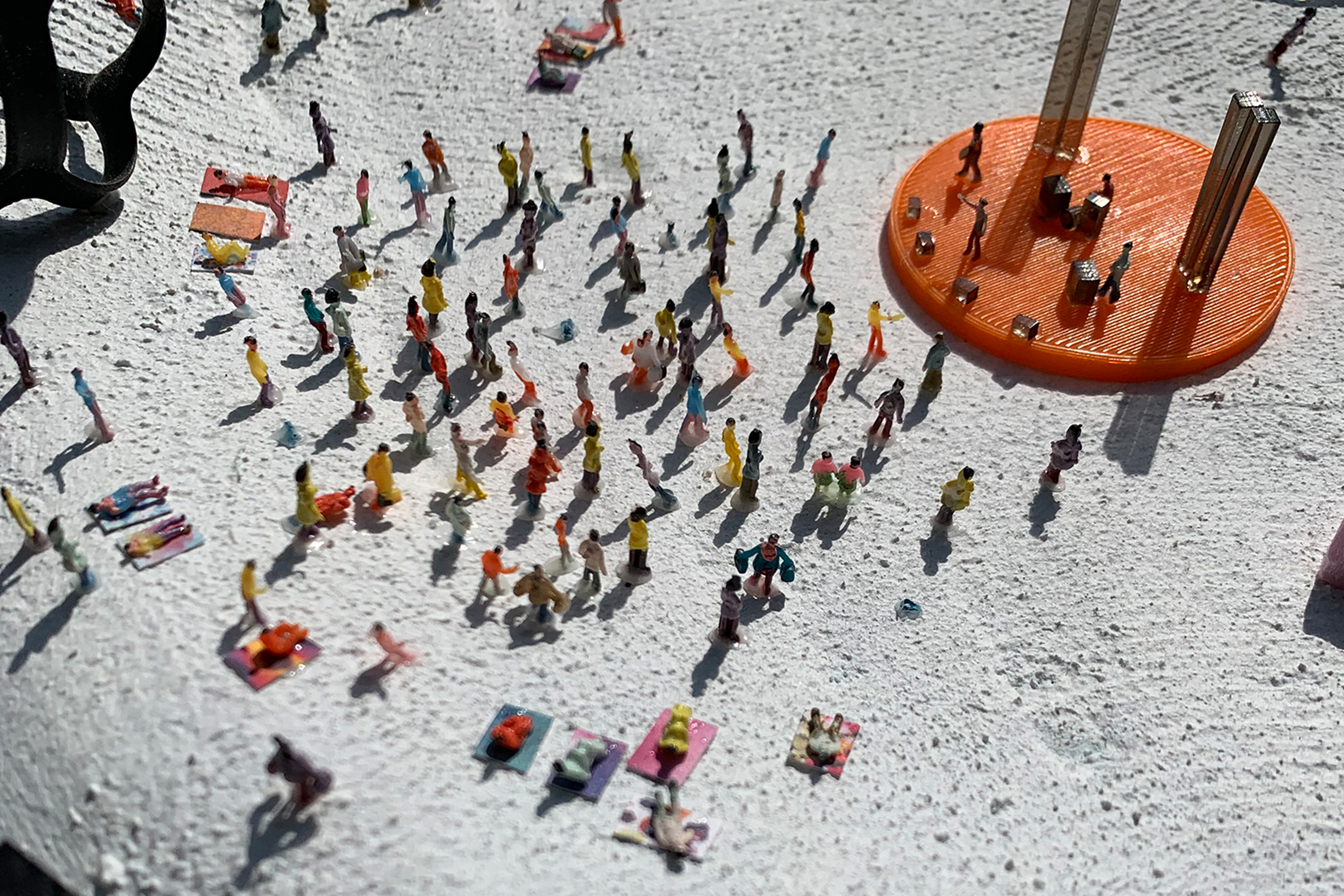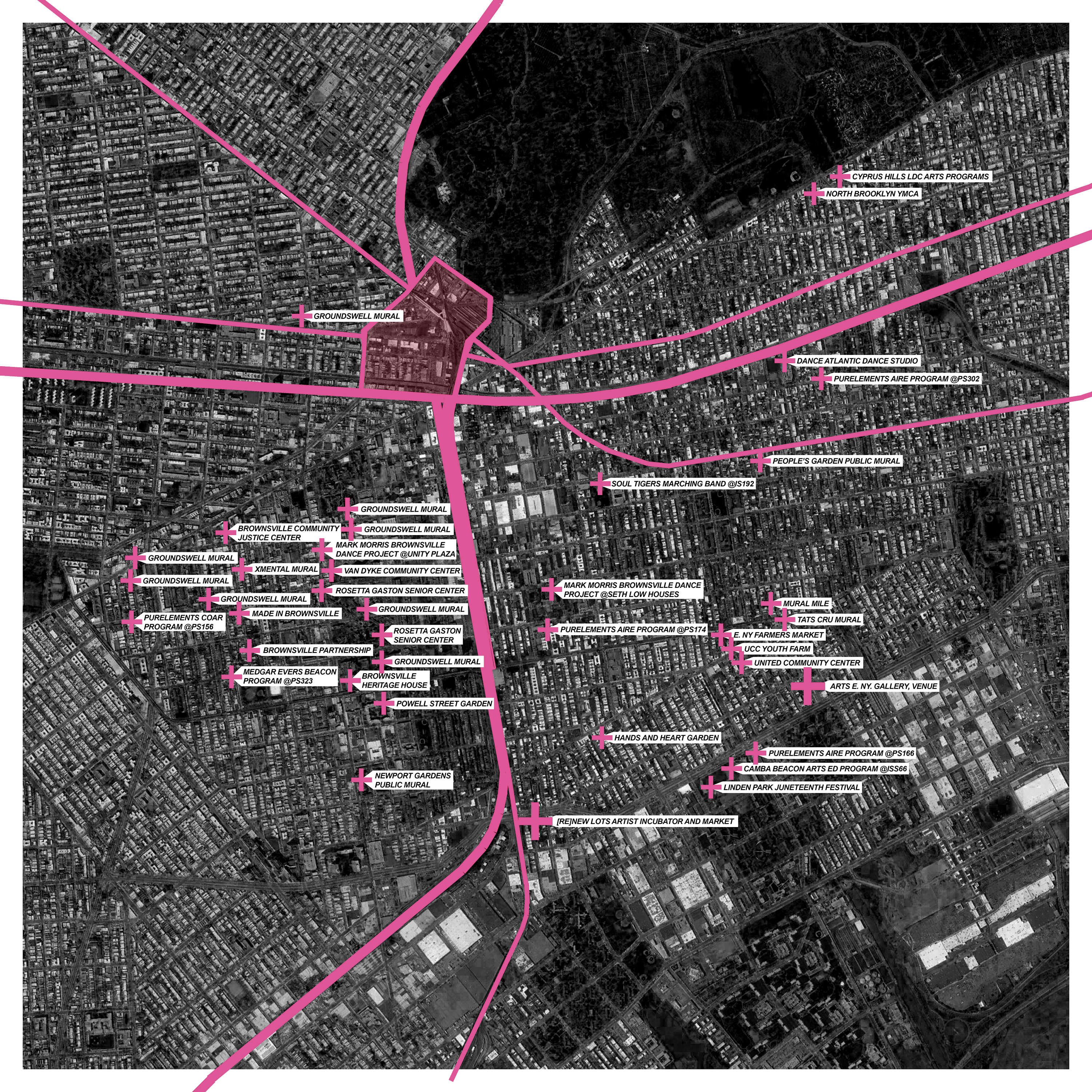



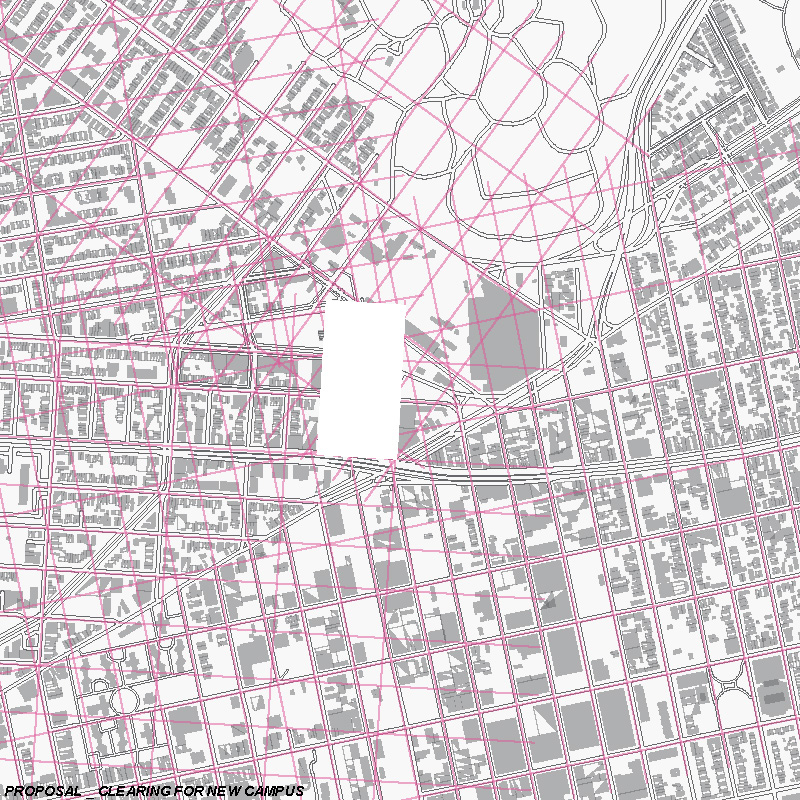




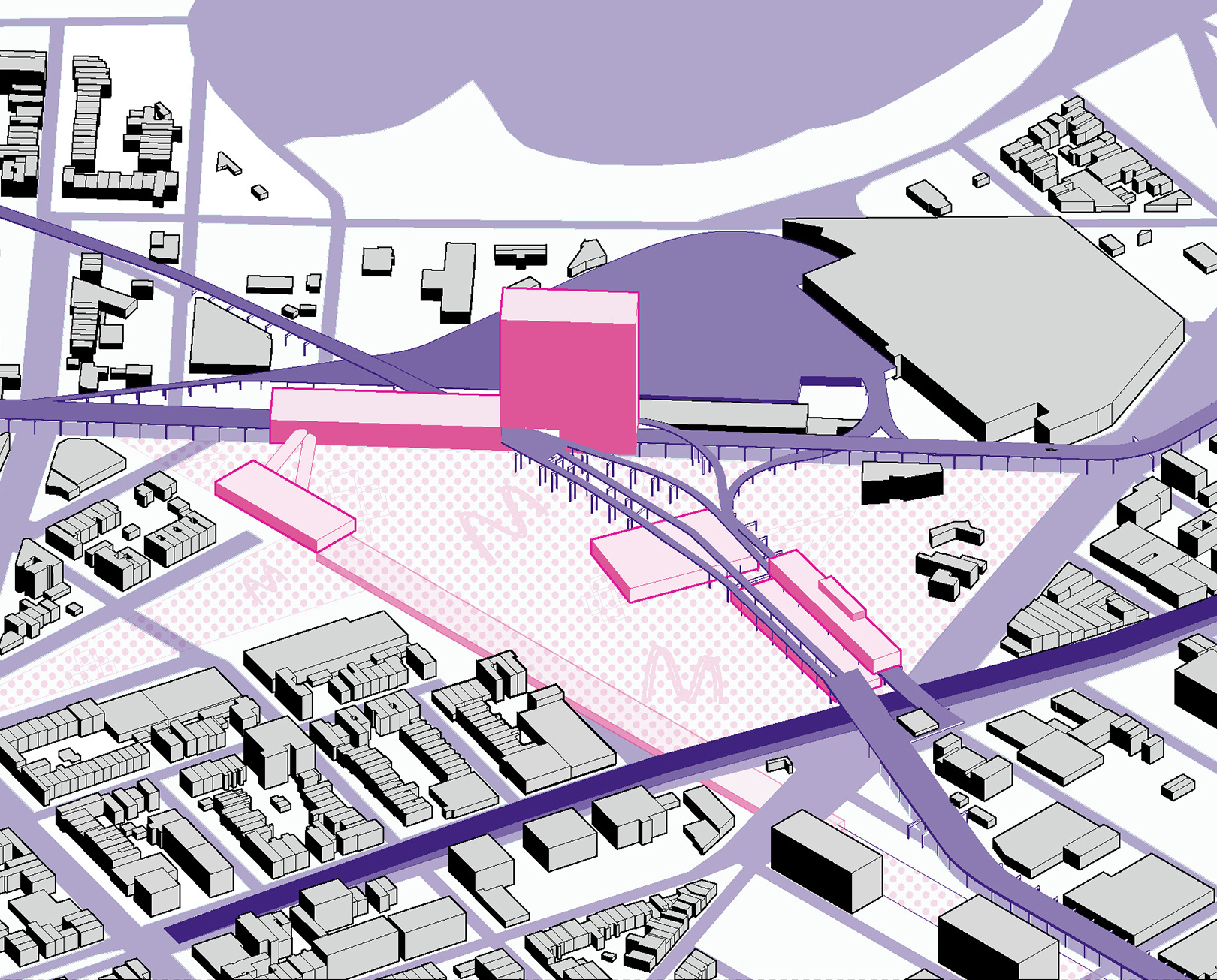

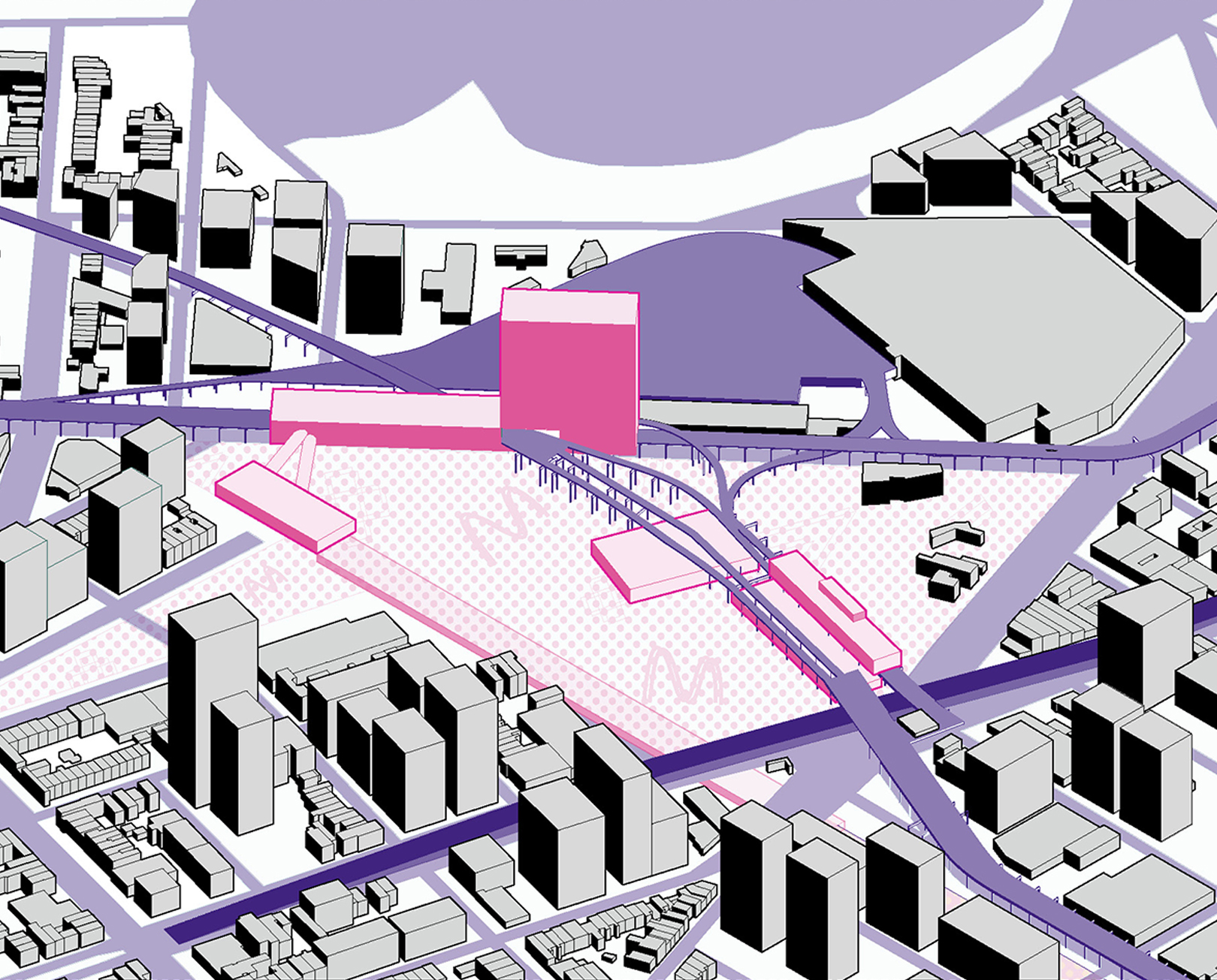
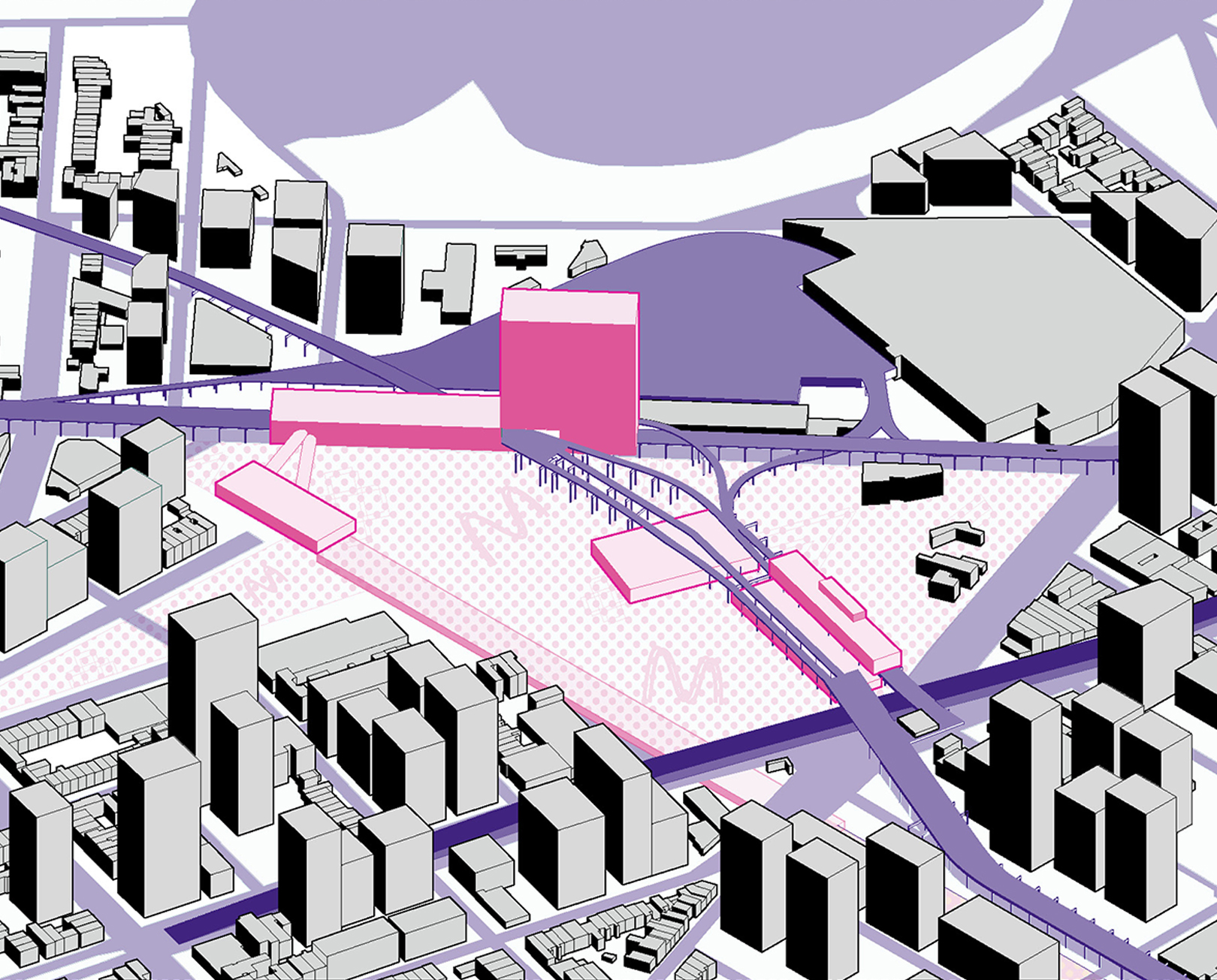
Intersections with Infrastructure
Critic: Matthew Jull
Collaborators: Chris Weimann and Sam Johnson
Location: East New York, New York City
Area: 500,000sf | 46,500sm
Term: Spring 2017
Critic: Matthew Jull
Collaborators: Chris Weimann and Sam Johnson
Location: East New York, New York City
Area: 500,000sf | 46,500sm
Term: Spring 2017
The neighborhood surrounding Broadway Junction holds a unique position in East New York. As the city continues to expand, this well-connected node could become the next place of interest for development. Passing through its core are five New York City Subway lines and subway depot, several bus routes and a major bus depot, the Long Island Railroad, and a disconnected web of vehicular infrastructure.
While visiting the site, what emerged to the surface were stories of residents, local artists, urban planners and advocates for East New York, describing how they felt this was one of the last places in New York where they could make a mark on their city or have a say in their neighborhood. East New York has several smaller scale arts initiatives and community run programs, but to access commissioned art productions, residents have to travel over an hour via public transit to reach museums or theaters.
The project situates itself in this negotiation; between a city which is continuing to expand and a neighborhood wanting to maintain its identity. Through a careful investigation of the conditions of the site, a few key contextual relationships were identified to build on; a lack of pedestrian access between various transit modes acting on site, a lack of public spaces and social infrastructures for the current and future populations of this neighborhood, and an opportunity to connect stakeholders to new spaces on the site through the use of existing infrastructure.
First, the project connects a series of parks and parking lots to create a ‘Central Park’ for East New York. Running along its perimeter and protecting this space from encroaching development is a series of buildings which are designed in relation to the various existing rail infrastructures on the site. These infrastructures are incorporated into the design providing access across the site, but also integrated into the landscape of the park, creating smaller informal performance spaces, and connecting to larger social programs of the market, theater, performing arts school, and HRA office building. As one travels around the central park through the programmed access loop, the spaces vary from underground to elevated. This key threshold of program becomes an incubator of activity opening to the park and the surrounding neighborhoods.
As East New York’s population continues to increase, this project will provide space for a cultural hub built on local identity to develop in relation to the unique existing programmatic, spacial and social characteristics of the neighborhood.
While visiting the site, what emerged to the surface were stories of residents, local artists, urban planners and advocates for East New York, describing how they felt this was one of the last places in New York where they could make a mark on their city or have a say in their neighborhood. East New York has several smaller scale arts initiatives and community run programs, but to access commissioned art productions, residents have to travel over an hour via public transit to reach museums or theaters.
The project situates itself in this negotiation; between a city which is continuing to expand and a neighborhood wanting to maintain its identity. Through a careful investigation of the conditions of the site, a few key contextual relationships were identified to build on; a lack of pedestrian access between various transit modes acting on site, a lack of public spaces and social infrastructures for the current and future populations of this neighborhood, and an opportunity to connect stakeholders to new spaces on the site through the use of existing infrastructure.
First, the project connects a series of parks and parking lots to create a ‘Central Park’ for East New York. Running along its perimeter and protecting this space from encroaching development is a series of buildings which are designed in relation to the various existing rail infrastructures on the site. These infrastructures are incorporated into the design providing access across the site, but also integrated into the landscape of the park, creating smaller informal performance spaces, and connecting to larger social programs of the market, theater, performing arts school, and HRA office building. As one travels around the central park through the programmed access loop, the spaces vary from underground to elevated. This key threshold of program becomes an incubator of activity opening to the park and the surrounding neighborhoods.
As East New York’s population continues to increase, this project will provide space for a cultural hub built on local identity to develop in relation to the unique existing programmatic, spacial and social characteristics of the neighborhood.


